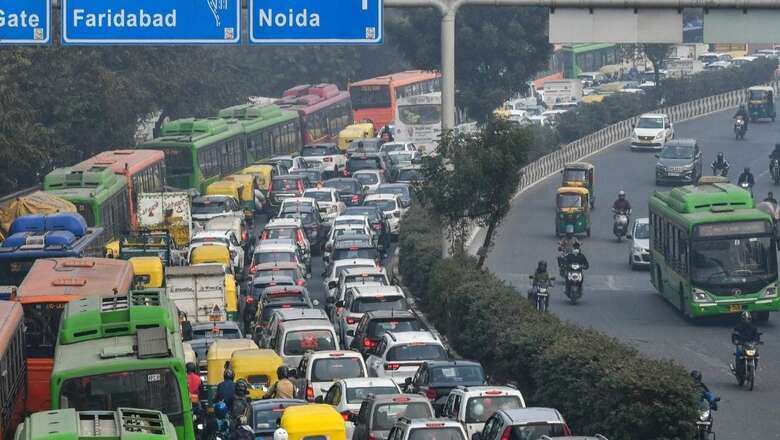
views
Intelligent and sustainable transport management is the need of the hour.
Most of the metropolitan cities are ‘saturated cities’ with key offices and services concentrated in the heart of the city, which indeed requires private vehicles to reach the exact destination, far away from the last-mile connectivity of public transport. The net result will be more private cars on roads.
It is time for transport policy makers of respective State Governments to redesign these cities, which means further developments on improving the city should be focussed on ‘transit cities’.
Transit cities give more importance to public transport, reduction of private cars on road with emphasis on improving ‘mobility’ and ‘accessibility’, and focus on time and location-specific road and parking pricing.
The question is how to improve the existing arrangements in the city. For example, a metro network is proposed to be established in a saturated city. Metro stations should necessarily be in locations where all the public utility services are available. The stations should be designed like Kyoto city in Japan, where spaces for service and shopping centres are available for public to access goods and services.
The recent trend of provision of more parking facilities in public places at low costs, especially in malls, should be done away with, which indeed promotes usage of private vehicles. Rather, metro connectivity to these shopping destinations should be established by a walkable distance.
In developed Scandinavian countries, walking, as also cycling, to offices is indeed encouraged through monetary packages and walking and cycling spaces are also well-developed. In India, this requires a shift in the habits and cultural stickiness associated with usage of private cars.
Recently, India, having abolished physical collection of taxes, is working to do away with toll booths, and thus there is scope for elevating it to congestion tax model with peak load pricing.
India is on an ambitious plan to develop wide expressways to reduce the time of journey. The history of existing highways or streets in India derives from a host of approaches to collective choices of society. While high-speed designs are presumed to be more forgiving of driver error, urban planners prefer narrower, shorter, more enclosed, and more interconnected streets. Measures should be oriented towards improving the accessibility and place functions of any street, so as to restrict the private cars and improve public transport. Footpath and cycling tracks may also be ensured in these expressways and streets.
Most of the transport buses in Indian metropolitan cities are old ones, with lack of maintenance hampering environment. Also, the success of public transport depends on the comfort it offers than private cars, and the quality matters. Thus, the suggested restructuring transport proposals in Indian cities should be supported by good quality air-conditioned low floor transport buses supported by transport infrastructure.
Unauthorised on-street parking is another issue in metropolitan cities resulting in traffic congestion. In this regard, these cities need to implement the policy of differentiated fees for parking, wherein the most crowded places attract the highest parking fees. Efforts to promote park-once-and-walk districts with priced public parking, and to make parking more market-responsive are also essential. There is also a need to enhance off-street parking as on-street parking gets usually converted into cycle lanes. Combination of pricing and enforcement are key tools for parking management so as to check congestion.
In Indian cities, transport network may be composed of public monopolies mainly buses, supported by well-regulated as also inefficient passive franchises. Reorganizing these passive services may be a cumbersome process as they are more region/sector based. Moreover, this policy is to be supported by accurate and relevant, up-to-date and real-time data on urban trends and conditions. Thus, the Government may need to fine-tune the proposal of improving the quality of public transport to ensure that its positive environmental externalities far exceed the initial marginal social cost to society. In this regard, the social welfare organizations in India can play an important role.
The way ahead for transport policy for India could be traffic management using intelligent transport systems, personal travel planning and public transport, autonomous and connected vehicles for mobility, unmanned aerial vehicles/drones for monitoring. The key challenge in the development of the identified digital technologies and their applications will be to integrate the business and governance models for new mobility technologies, services and systems successfully.
Surjith Karthikeyan serves as Civil Servant at Indian Ministry of Finance. Views are personal.




















Comments
0 comment